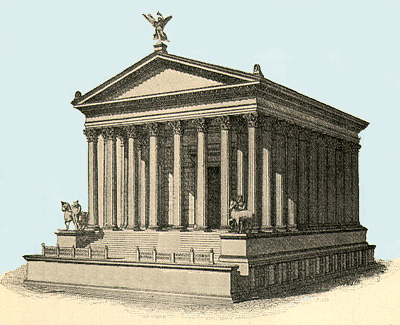
As you stand at the foot of the Temple of Castor, you have to crane your neck upward to take in its majesty and beauty. Even though this temple honored both Castor and his twin brother Pollux, who were collectively called the Dioscuri, Romans called it the Temple of Castor or of the Castores (you think to youself that Castor always did get more attention!).
The temple was originally dedicated, according to Livy, in 484 BCE next to the Pool of Juturna (lacus Juturnae), the goddess of springs whom you remember from her prominent role in the last part of Vergil's Aeneid. Legend has it that Castor and Pollux were seen watering their horses in this pool when they appeared to announce the victory which Rome had won over the Latin League during the Battle at Lake Regillus, which had taken place some fifteen years previously (see this Republican coin depicting the brothers and their horses drinking from the spring). The founding of this temple is generally thought to have been the introduction of the cult of these two brothers into Rome, and many early coins depicted the twins, including this coin from 212 BCE, and this one from 109 BCE.
Three spectacular columns are the only substantial remnants of the temple. These columns are not original to the temple, but date from a reconstruction of the temple completed in the Augustan era. Here's an artist's conception of a side view of the temple as it might have looked during Augustus' day, and this reconstruction shows the front of the temple (courtesy of UCLA's Digital Roman Forum).